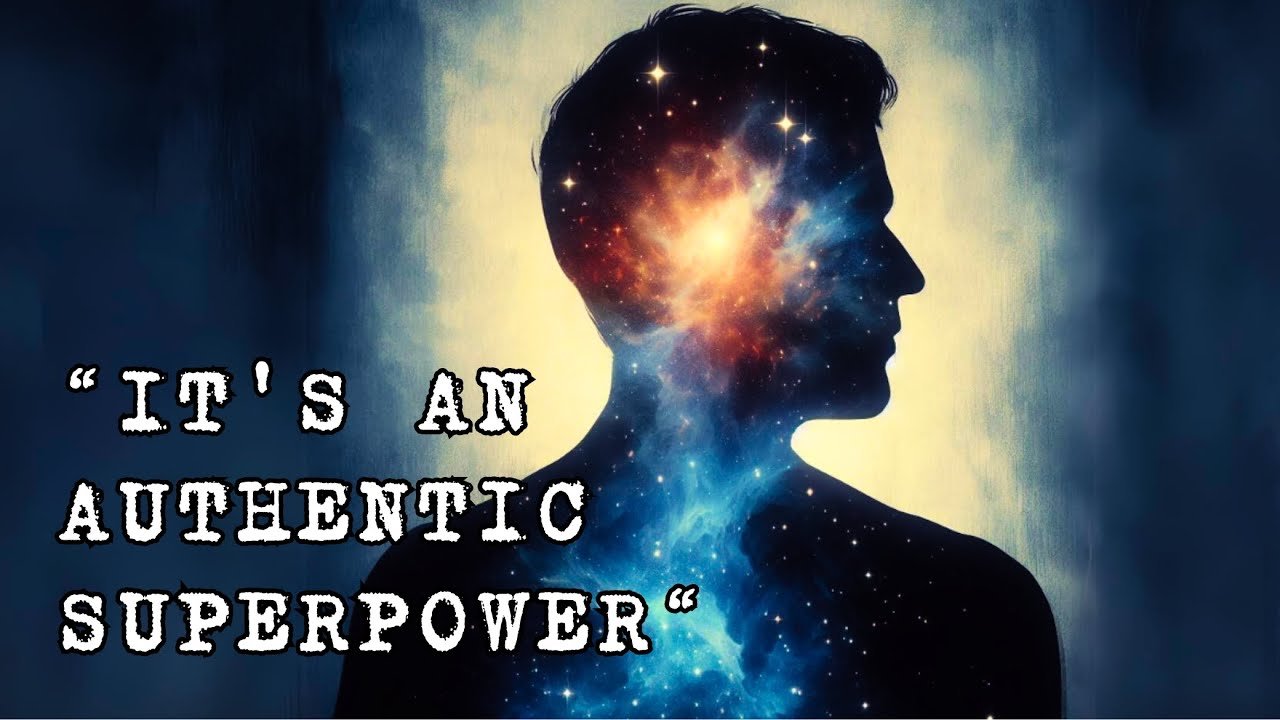In the journey towards self-awareness and inner peace, you discover the incredible power of non-reaction. This principle invites you to embrace life with a calm and observant approach, letting go of the need to change others or circumstances. By fully living in the present moment, you find that true happiness is a natural state, untouched by life’s ups and downs. Allowing yourself to simply observe, rather than react, opens a gateway to energy and clarity, enriching your life with a sense of vitality and tranquility.
As you cultivate this practice of non-reaction, you become a witness to life, releasing yourself from attachment to thoughts and emotions that often lead to stress or conflict. Observing the flow of your own thoughts without interference encourages inner silence and helps transcend mind-driven reactions. This newfound mastery over the mind gradually leads to profound peace, as you start viewing the world from a perspective of detachment and ease. Through this journey, you uncover inherent joy and contentment, realizing that the essence of spirituality lies in the simple choice not to react.
Understanding Non-Reaction
Defining Non-Reaction and Its Significance
Non-reaction is the conscious decision to remain calm and unresponsive to external events that typically incite automatic responses. Unlike passivity, non-reaction involves a deliberate choice to maintain peace and clarity, allowing you to observe rather than be dominated by immediate reactions. This approach can lead to profound inner peace, as it helps you navigate life’s challenges without allowing them to disturb your equilibrium. It empowers you to face situations with a clear mind, free from the emotional turmoil often triggered by immediate reactions.
The Philosophical Roots of Non-Reaction
Philosophically, non-reaction is rooted in the idea that the self is separate from fleeting emotions and thoughts. This perspective is echoed in numerous philosophical traditions, where the emphasis is placed on the inner observer or the witness within you. By understanding the transient nature of emotions and thoughts, you can realize that true essence is detached from these temporary states of being. This philosophical stance fosters a mindset that values observation over engagement, offering a path toward wisdom and self-awareness.
How Non-Reaction Differs from Passivity
While non-reaction and passivity might seem similar at first glance, they are fundamentally different. Passivity suggests a lack of action or engagement, possibly leading to stagnation or avoidance. Non-reaction, however, is an active choice to disengage from unnecessary emotional involvement while still being fully present and aware. It’s about empowering yourself to choose how to respond rather than being controlled by habitual reactions. This mindful approach allows for thoughtful action and decision-making, unmarred by impulsive emotional responses.
The Spiritual Basis of Non-Reaction
Non-Reaction in Ancient Spiritual Teachings
Ancient spiritual texts often highlight non-reaction as a path to enlightenment and liberation. For instance, in many Eastern philosophies, non-reaction is associated with the idea of achieving nirvana or moksha—a state of spiritual freedom. These teachings suggest that by observing life without attachment or aversion, you can transcend worldly suffering and realize a more profound truth. Non-reaction is thus seen as a tool to cultivate inner silence and connect with the divine or universal self.
The Role of Non-Reaction in Modern Spirituality
In modern spirituality, non-reaction continues to play a crucial role. Practitioners often view it as a means of achieving a deeper connection with oneself and the world. By reducing reactivity, you open up space for greater empathy, understanding, and acceptance of life’s impermanence. This approach is particularly relevant in today’s fast-paced world, offering a way to stay grounded amid constant change. It fosters a spiritual lifestyle that embraces stillness, reflection, and the transcending of ego-driven desires.
Cultivating a Non-Reactive Mindset
Cultivating a non-reactive mindset involves daily practice and introspection. It begins with mindfulness—paying attention to your thoughts and emotions without judgment. You can start by setting aside a few minutes each day to meditate, allowing yourself to sit quietly and observe your mental landscape. Gradually, you become familiar with your habitual reactions and can choose to respond differently. This cultivation of non-reactivity facilitates a dynamic shift, moving you towards a more centered and spiritually enriched life.

This image is property of i.ytimg.com.
Embracing the Present Moment
Why the Present Moment is Essential
The present moment holds the key to true happiness and contentment. When you fixate on the past or worry about the future, you disconnect from the only moment where life truly unfolds—the now. Embracing the present allows you to experience life with clarity and without the baggage of regrets or anxieties. It is in the present that non-reaction finds its grounding, enabling you to be fully engaged with each moment as it arises, without unnecessary distractions.
Techniques to Stay Present and Aware
Staying present requires practice and intention. Techniques such as deep breathing, mindfulness meditation, and grounding exercises can help anchor you in the now. Regularly redirecting your attention back to the present moment—whether during meditation or daily activities—strengthens your ability to maintain awareness. Mindful walking, eating, and even simple chores can become opportunities to practice presence. Engaging fully with whatever task or experience is before you fosters a more profound connection with life itself.
Benefits of Embracing the Present
By embracing the present moment, you unlock numerous benefits, including reduced stress and anxiety. When your attention is anchored in the current moment, you naturally become more aware of your thoughts and emotions, allowing you to manage them more effectively. The practice cultivates patience, resilience, and a greater appreciation of life’s simple joys. Ultimately, living in the present fosters a deeper sense of peace and satisfaction, as you begin to recognize the abundance and beauty available in the here and now.
Inner Peace Through Non-Reaction
How Non-Reaction Brings Inner Peace
Non-reaction paves the way for inner peace by allowing you to experience life without the turbulence of constant emotional reactions. Rather than being swept away by anger, fear, or frustration, you remain as the calm center amid life’s storms. This steadiness enables you to react thoughtfully instead of compulsively. As you become more adept at non-reaction, the frequency and intensity of disruptive emotions diminish, leading to a stable and enduring sense of peace.
Maintaining Tranquility Amidst Challenges
Maintaining tranquility when faced with adversity requires commitment to the practice of non-reaction. It involves observing challenges without immediate engagement, thus preserving your inner balance. By letting go of the need to control every situation, you reduce stress and open yourself up to new perspectives and solutions. Viewing challenges as opportunities for growth rather than threats to peace empowers you to face them with confidence and calmness.
Real-Life Examples of Inner Peace
Consider scenarios where non-reaction leads to peace: someone cuts you off in traffic, disrupting your morning drive. You acknowledge the situation, take a deep breath, and continue your journey without hostility. Or perhaps during a heated debate, rather than reacting with anger, you choose to listen and respond with understanding. In both cases, by practicing non-reaction, you protect your peace, demonstrating the power of presence and mindfulness in everyday life.

The Shift from Reaction to Observation
Becoming a Witness to Life
Transitioning to a witness mindset means observing the ebb and flow of life without becoming entangled in it. You view experiences, emotions, and thoughts as they arise, recognizing them as temporary and ever-changing. This perspective permits you to see life more clearly, free from the distortion of reactive thinking. Becoming a witness fosters a deeper awareness, where you appreciate the complexity of life without being adversely affected by it.
The Energy and Clarity Unlocked by Non-Reaction
Non-reaction liberates energy previously consumed by emotional turmoil, enabling you to direct this vitality towards more purposeful endeavors. With clarity unimpeded by reactivity, decision-making becomes clear, creative, and conscious. This newfound energy empowers you to pursue interests that resonate with your authentic self, improving both emotional well-being and productivity. The clarity attained through this practice redefines how you interact with the world, enhancing communication and relationship dynamics.
The Impact of Observation on Mood
Observation without reaction significantly improves mood by reducing anxiety and depression brought on by overthinking or emotional volatility. When you allow emotions to pass through without resistance, they dissipate naturally, leaving space for more positive states of mind. Furthermore, observation increases awareness of negative thought patterns, offering the chance to reframe them, which leads to a more optimistic and resilient outlook on life.
Mastering the Mind for Self-Awareness
Understanding Mind-Driven Reactions
Much of human behavior is rooted in automatic, mind-driven reactions. These responses often stem from conditioned beliefs and past experiences that influence how you perceive and react to present situations. By understanding these patterns, you gain insight into your habitual responses, paving the way for change. Recognizing that these reactions do not define your true self frees you to choose actions that align with a more conscious, self-aware approach.
Techniques for Observing Thoughts and Emotions
Observing your thoughts and emotions without attachment is a powerful technique for greater self-awareness. Practices such as journaling or mindfulness meditation can help you track and analyze your mental patterns. Watching thoughts as if you are an external observer allows you to notice recurrent themes and triggers, enabling you to address and transform them. This process fosters a deep sense of self-understanding and alignment with your authentic self.
Achieving Mastery Over the Mind
Achieving mastery over your mind doesn’t mean suppressing thoughts or emotions but understanding and redirecting them constructively. With consistent practice of mindfulness, meditation, and reflection, you develop the ability to discern between useful thoughts and distractions. Mastery entails the realization that you are the conscious awareness behind thoughts, not their captive. When your mind is under your conscious control, you experience an enduring sense of peace and empowerment.

Living with Detachment
Detaching from Identity and Self-Importance
Detachment involves releasing the notion of identifying with any particular role, identity, or status. It is the understanding that your worth is not contingent on external validation or achievements. Letting go of self-importance doesn’t mean you undervalue yourself but recognize the inherent similarity and equality shared with all beings. This detachment facilitates a life of authenticity and openness, unbounded by societal expectations or personal insecurities.
Promoting Serenity Through Detachment
By practicing detachment, you cultivate an environment of serenity within yourself. Detachment enables you to interact with the world graciously and resiliently, unshackled by the burden of constant approval or the fear of judgment. This freedom permits genuine engagement with others and circumstances, devoid of fear or desire. Peace emerges naturally, rooted in the unwavering understanding that your core self is untouched by external fluctuations.
Freedom from Worldly Events and Attachments
Freedom arises when you no longer attach your happiness to possessions, status, or outcomes. Real freedom comes with the realization that true contentment is intrinsic and not swayed by the external world. By releasing attachments to things and outcomes, you discover a boundless capacity for joy—a joy not tethered to the ephemeral world but one that thrives regardless of the environment.
The Path to Emptiness and Liberation
Releasing Thoughts and Attachments
Releasing thoughts and attachments doesn’t imply abandonment of responsibility or relationships; rather, it means letting go of the thoughts and attachments that bind you to habitual suffering. By permitting thoughts to arise and pass without engaging them, you cultivate a spaciousness where the true self can flourish. This release leads to emotional liberation and a clearer vision of your true essence.
Understanding Emptiness in Self-Realization
In many spiritual traditions, the concept of emptiness is about understanding that all things are interconnected and impermanent. This understanding shifts your perception from focusing on the superficial to embracing the fullness found in emptiness. In emptiness, you find the foundation of self-realization, appreciating the true nature as part of an infinite, interconnected universe rather than an isolated self.
The Liberating Power of Non-Reaction
Non-reaction is profoundly liberating, as it unshackles you from the cycle of reactive patterns and emotional disturbances. This liberation brings with it a sense of expansion and connection to life’s grandeur, recognizing each moment as a perfect expression of the whole. The power of non-reaction resides in the freedom to experience life fully, and with joy, knowledge of your essential self remains constant amidst life’s ebb and flow.
Achieving Joy and Contentment
Finding Inherent Joy Through Non-Reaction
Inherent joy is your natural state, revealed through the practice of non-reaction. By experiencing life without interference or demands, you reconnect to the spontaneous joy that thrives within. This joy arises not from external achievements or possessions but from the realization that you are the joyful awareness experiencing life itself. Non-reaction helps you unlock this joy, offering a life of simplicity, satisfaction, and profound contentment.
Perceived Problems and Their Insignificance
Many perceived problems are made significant only by the reactive mind’s proclivity for drama and attachment. When detached, these challenges are often revealed as opportunities for growth or as passing phenomena within the broader scope of life. Understanding their insignificance in the grand scheme fosters a peaceful mindset, allowing you to navigate life with grace and resilience.
The Joy of Living Without Reaction
Living without reaction transforms existence into a dance of awareness where joy is the natural rhythm. This approach invites a light-heartedness and spontaneity into your life, where experiences are embraced without the shadows of fear or doubt. The joy of living without reaction lies in the freedom to engage with life’s beauty and mystery, unfettered by the need to control or possess.
Conclusion
The Transformative Power of Non-Reaction
Non-reaction holds transformative power, altering your relationship with the world by fostering inner peace and a profound sense of self-awareness. It offers a pathway to happiness and satisfaction independent of external circumstances, reshaping how challenges are perceived and experienced. This practice encourages you to discover your true nature, intimately connected with the present moment and all it encompasses.
Incorporating Non-Reaction into Daily Life
Incorporating non-reaction into daily life involves consistent practice and a willingness to observe rather than control. Start by being mindful of moments that typically trigger reactions and allow yourself the space to pause and choose differently. Engage in daily mindfulness practices, meditation, and conscious reflection to strengthen this ability over time.
The Journey Toward Lasting Inner Peace and Awareness
The journey towards lasting inner peace and awareness through non-reaction is an ongoing exploration into the depths of your true self. By embracing this path, you discover a life imbued with tranquility, clarity, and joy. This journey is not about achieving perfection but reconnecting with your inherent nature, a serene and conscious presence in a world of change. Let non-reaction guide you toward this ultimate liberation—a life lived fully, courageously, and in harmony with all that is.

